Ministry of Foreign Affairs, Thailand Monocle
Thailand: A Proud History
Thailand’s royal barge processions are an ancient tradition and a rare spectacle. This year’s regal flotilla carried special significance as it combined an annual religious ceremony, rich in craft and customs, with King Maha Vajiralongkorn’s auspicious 72nd birthday.
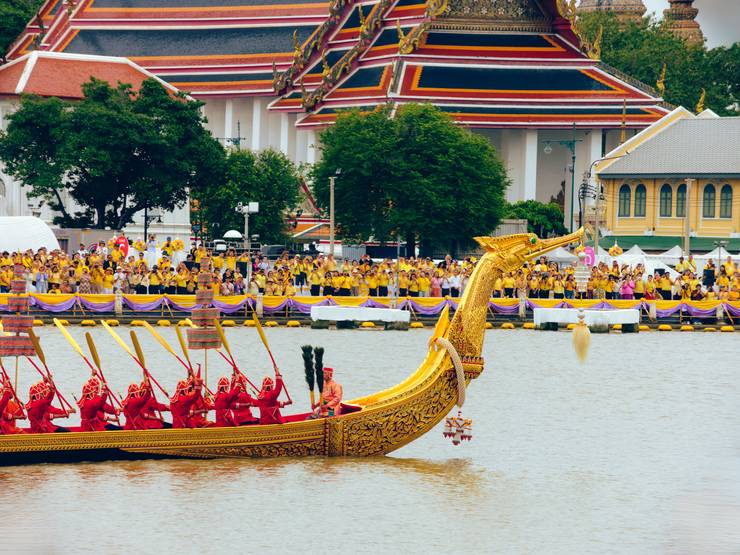
Royal barge processions have been held in Thailand for at least 700 years
Golden moment
On 27 October, the Royal Barge Suphannahong (or “golden swan”)carried King Vajiralongkorn and Queen Suthida along Bangkok’s mighty Chao Phraya river. The magnificent vessel sailed serenely in a formation of 52 boats as 2,200 liveried oarsmen rowed to a rhythm set by flag-waving signalmen and chanters singing Buddhist verses.
The royal barge processions are most closely associated with Thot Kathin, a religious ceremony marking the end of the rainy season.When King Vajiralongkorn disembarked at Wat Arun, Bangkok’s famous “temple of dawn”, to make an offering to the resident monks, he was continuing a royal tradition stretching back to the 14th century.
This year’s event marked King Vajiralongkorn turning 72 – his “sixth cycle” of the 12-year astrological calendar and an auspicious milestone in Thai culture. Many major livelihood projects are being undertaken in his honour, from planting trees to building reservoirs, imbuing the pageantry with a legacy for the entire nation to enjoy.
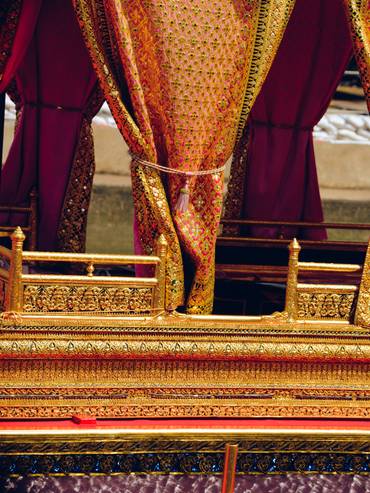
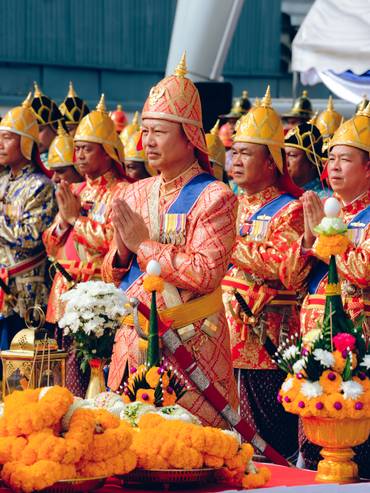
Previous processions have marked coronations or greeted 17th-century European emissaries visiting the ancient capital of Ayutthaya
Q&A
Weeraya Juntradee Director, Office of Traditional Arts,
Ministry of Culture

Juntradee and her team are tasked with preserving and reviving the traditional craftsmanship involved
What is your department’s role in the procession?
Each of the 52 vessels is a masterpiece of traditional craftsmanship. We are responsible for the restoration of all the artworks on the four royal barges, such as the intricate wood carving, gilding and glass mosaic decoration.
What was the most challenging part?
There are not many artists with the highly skilled craftsmanship required to restore a royal barge, so we must do a large amount of work in a limited time with a small number of people.
Why is the procession still relevant today?
As the world becomes more connected, it becomes even more important to preserve and pass on the cultural heritage that defines each nation’s identity. Helping contemporary Thais understand the roots of our identity through our shared culture is what binds us together as people and creates a sense of unity as a nation.
Precision at work
Like elegant temples gliding through the water, the royal barges are crafted with love by artisans from the Thai government’s fine arts department. That beauty and precision extends to the procession itself, thanks to the laser rangefinders that help the 52 vessels stay in formation.
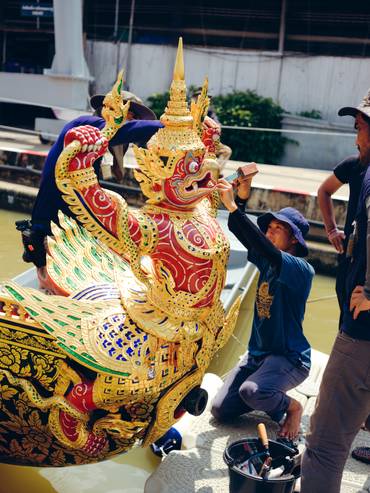
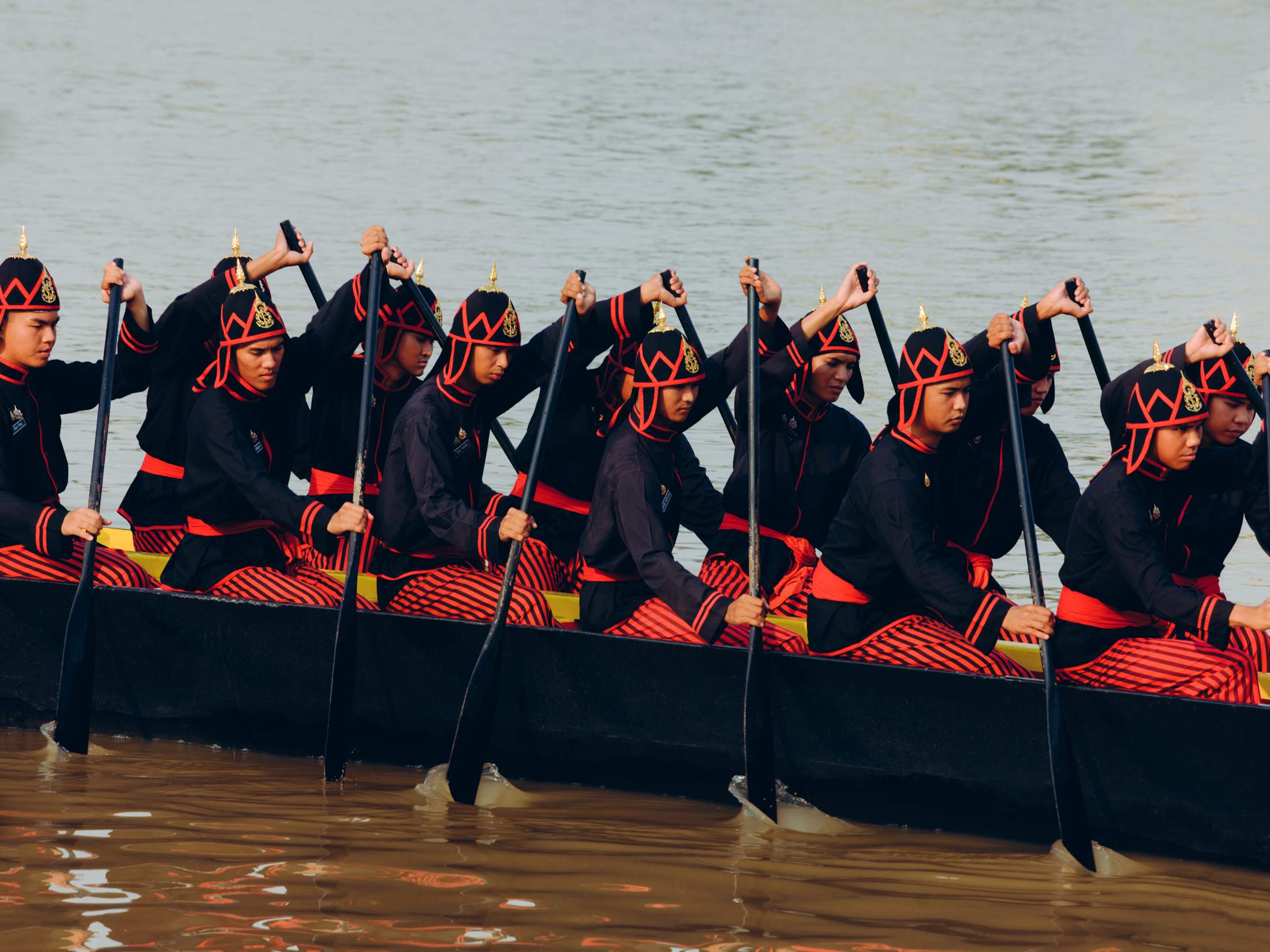
Q&A
Admiral Vijit Tanprapha Chairman, Preparatory Committee
for the 2024 Royal Barge Procession
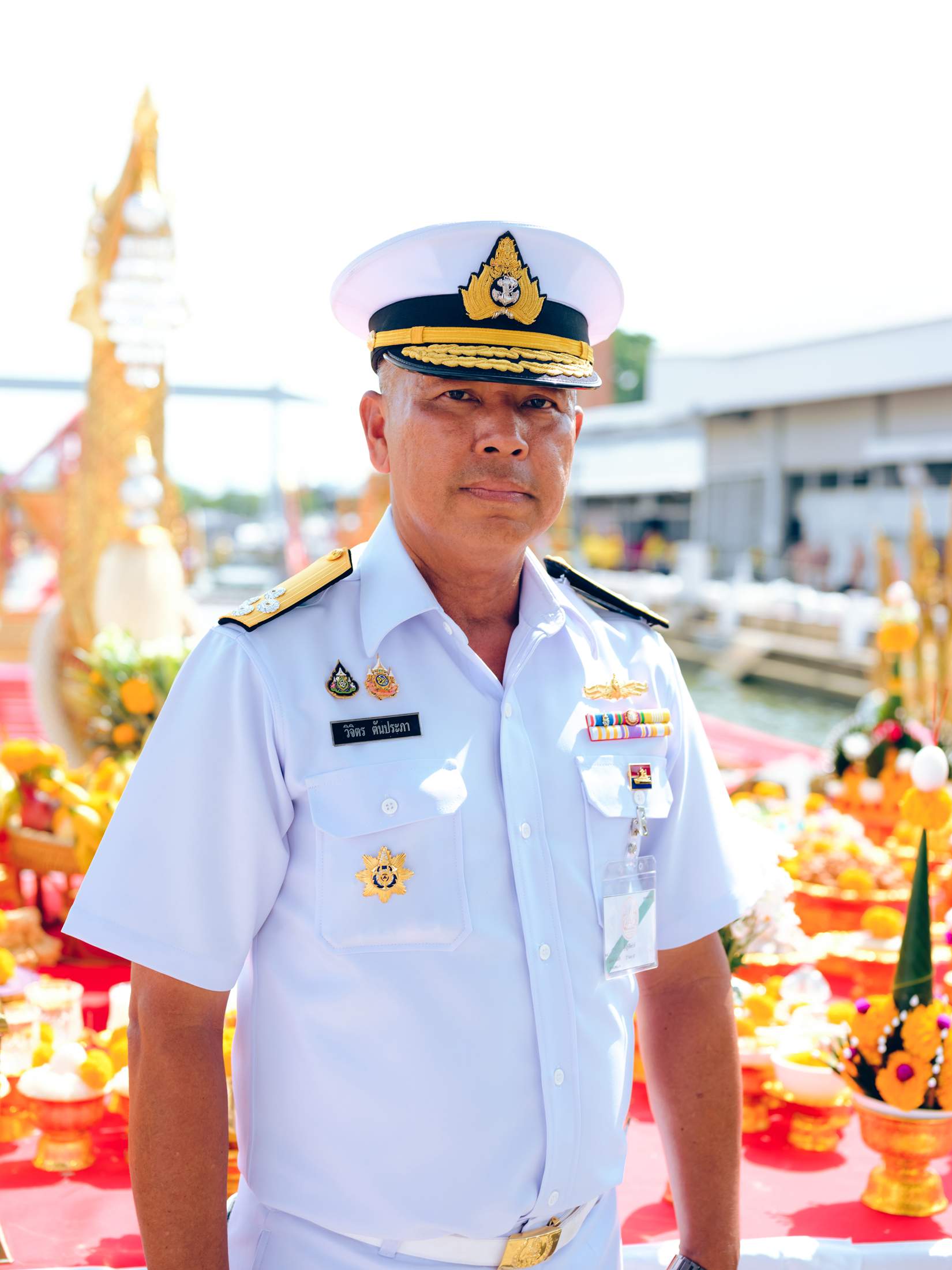
The last procession was held in 2019 for the King’s coronation. Did you make any changes for this event?
The rhythmic barge-rowing chants were composed for the event by Rear Admiral Thongyoi Saengsinchai. He’s been the official composer for many decades.
What are the biggest challenges?
Managing and training all the personnel. This is a once-in-a-lifetime experience for our naval officers. The weather is another big factor that we could not control.
What will be the legacy of this procession?
The preservation of ancient royal traditions and a unique cultural heritage that can’t be found elsewhere in the world.
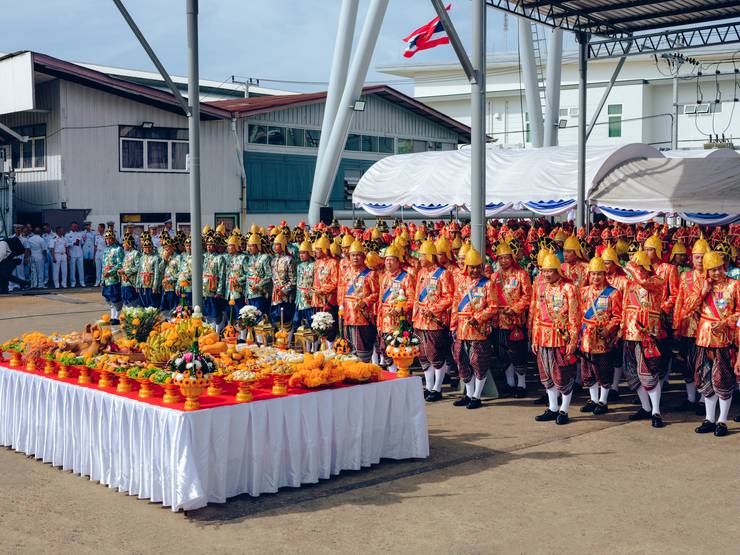
The procession takes place in and out of the water
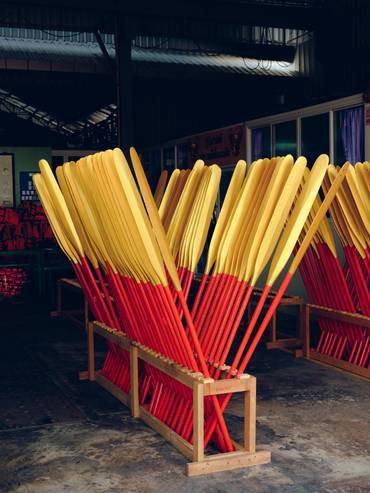
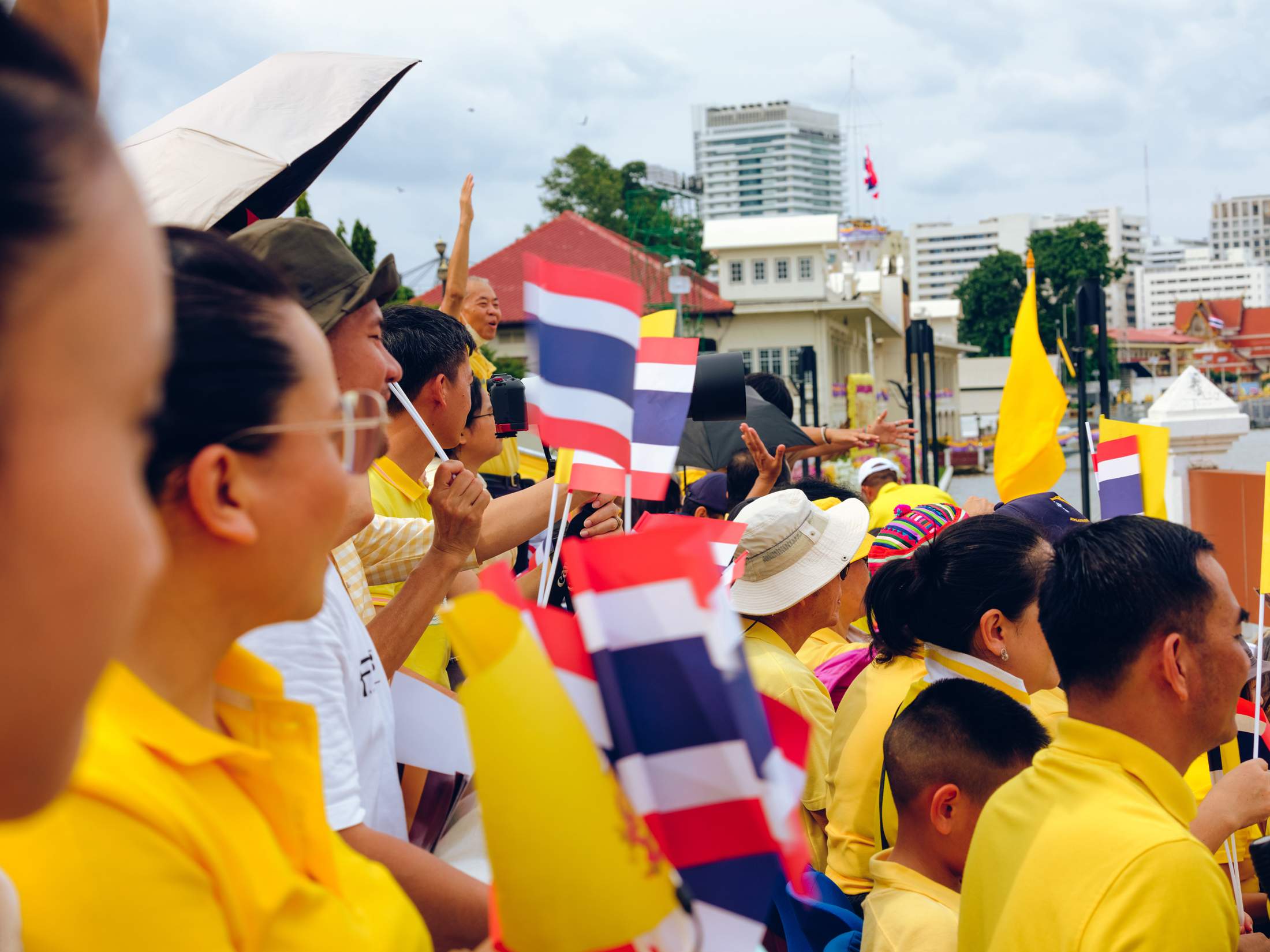
After a procession, the four royal vessels go back on display at Bangkok’s Royal Barges National Museum
Tracing a historic route
Taking to the river in Bangkok is to journey through Thailand’s unique history. The Sappaya-Sapasathan parliament complex sits upstream from where the procession starts. The route passes Thailand’s prestigious Thammasat university and Thailand’s first and largest hospital. Sirijaj was founded in 1888 by King Chulalongkorn and today it’s a flagbearer for the country’s universal healthcare system.
The crowds lining the riverbanks exude warmth and generosity – a Thai trademark just as captivating as the Grand Palace and Wat Arun, where the procession ends. These symbols of monarchy and Buddhism exemplify a tolerant Thai society that champions religious pluralism and progressive social policies. Earlier this year, King Vajiralongkorn signed a same-sex marriage bill into law – a first in southeast Asia. Around the riverbend sit the Mandarin Oriental and IconSiam: symbols of Bangkok’s world-class hospitality. From healthcare to social reforms, Thailand is sailing ahead, buoyed by its proud heritage and rich culture.
mfa.go.th

